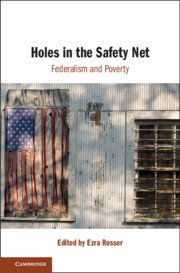New Article: Hiba Hafiz, Towards a Progressive Labor Antitrust, 125 Colum. L. Rev. (forthcoming 2025). Abstract below:
For decades, antitrust enforcers ignored employer power in labor markets, adopting neoclassical economic assumptions that labor markets were competitive and workers facing low wages or inferior working conditions can quit for better employment terms elsewhere. Despite considerable fanfare regarding the antitrust agencies’ recent turn towards labor antitrust, enforcers still deploy neoclassical assumptions and methods, targeting only proven deviations from a presumed competitive baseline, and finding regulatory intervention warranted solely when enforcers establish imperfect labor market competition, measured through employers’ ability to profitably lower wages or working conditions below what workers would experience in a competitive market. The New Labor Antitrust deduces the harms of employer power from the level of reduced labor market competition workers suffer from its exercise.
This Article radically challenges that approach as contrary to law and policy. First, it uncovers the antitrust statutes’ clear labor and wage policy rejecting competitively determined wage rates in favor of bargained-for wages determined through workers’ collective self-determination. It is the first to contextualize the history of the Clayton and Norris-LaGuardia Acts’ labor exemptions from antitrust regulation as a policy victory by Progressive and institutional economists over neoclassical and formalist views of labor relations. As deregulatory measures, the exemptions were never concessions to market regulation as superior labor policy. Rather, they declared the market’s failure to vindicate labor’s value where any unorganized worker is left to bargain individually over employment terms with corporate employers. Thus, current enforcement that measures employer power and its harms solely in terms of competition and market exchange defies Congress’s disavowal of the market’s ability to properly value labor and entrenches labor’s “commodified” (mis)valuation as antitrust’s lodestar achievement. Second, the New Labor Antitrust’s neoclassical approach contradicts mounting evidence of imperfect competition that should drive new assumptions and novel methods of detecting and countering employer power as a policy matter. Market-based metrics undercount the presence and effects of employer power and make it needlessly more challenging to establish employer liability, and then only for competition- rather than non-competition-based harms, like reducing workers’ countervailing power and full freedom of association. More generally, market- and competition-based metrics limit antitrust’s potential as a regulatory tool to build worker power through strengthening worker-led labor market institutions in antitrust enforcement and remedial design.
The Article explains how the New Labor Antitrust has inherited the neoclassical strictures and legacies of antitrust doctrine and enforcement methods developed outside the labor sphere to usurp a now-forgotten labor and wage policy that Congress once structured into antitrust law. It proposes a thorough reframing of labor antitrust regulation to better detect and target the sources of employer power and the mechanisms of employer exploitation consistent with a policy favoring workers’ collective self-determination. That reorientation begins by answering the originary questions of: (1) how ought we determine labor’s value outside of market-based metrics; and, relatedly, (2) how ought we measure employer power and its harms? It offers preliminary answers and suggests regulatory alternatives that draw from broader federal labor policy and the social scientific and philosophical literatures.





